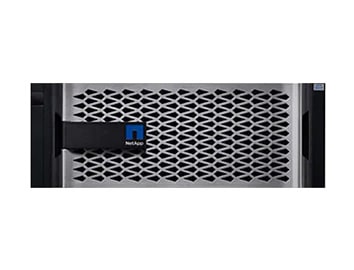Future-Proof Your IT Investment with NetApp AFF A400

Jesse Summan

NVMe Based Storage Makes the Difference
As you probably know, we recently launched a brand new end-to-end NVMe-based storage system, NetApp® AFF A400. I sat down with NetApp Technical Marketing Engineers Chris Lueth and Scott Bell to discuss some technical advantages of the newA400.Key advantages they mentioned include how the new system offers higher performance with more advanced technology, faster host connectivity, and greater flexibility and expand ability to future-proof your NetApp investment.What are some key features of the AFF A400?
The NetApp AFF A400 offers full end-to-end NVMe support at the midrange. The front-end NVMe/FC connectivity makes it possible to achieve optimal performance from an all-flash array for workloads that include artificial intelligence, machine learning, real-time analytics, and MongoDB, as well as business-critical databases. Furthermore, the system comes with the latest version of NetApp ONTAP® data management software, which allows you to easily view system information about capacity, hardware health, networking,and historical performance.
The AFF A400 accelerates business-critical applications that include all of these brands and more.

On the back end, the AFF A400 supports both serial-attached SCSI (SAS) and NVMe-attached SSDs, offering the versatility for current customers to move up from their legacy A-Series systems and satisfying the increasing interest that all customers have in NVMe-based storage. Furthermore, this system was built to provide expandability options,so you won’t have to make a costly leap from a midrange to a high-end system to increase scalability. Consider this a way to future-proof your NetApp investment.
How will this system future-proof my investment?
The AFF A400 offers greater port availability, network connectivity, and expandability.When buying a storage system,most customers plan to use it for3 to 5 years, but it's hard to predict how requirements may change during that time frame. The A400 has 10 PCIe Gen3 slots per HA pair.Many customers have a strong preference for additional I/O capabilities, and now with the A400, the increased number of PCIe Gen3 slots makes additional I/O possible.
The AFF A400 offers 25GbE or 100GbE, as well as 32Gb/FC and NVMe/FC network connectivity, which is at the leading edge of a midrange system.This model was created to keep up with changing business needs and performance and workload requirements by merging the latest technology for data acceleration and ultra-low latency in an end-to-end NVMe storage system, along with additional slots for expansion.

Front View
What network configurations does the AFF A400 support?
The AFF A400 has a 4U enclosure with two possible onboard connectivity configurations (25GbE or 16Gb/FC). In addition, the A400 is the only A-Series system that has the new smart I/O card with offload engine. The offload engine is computational and independent from the CPU, which allows better allocation of processing power. (The smart I/O card uses PCIe slot 3 by default.)This system also offers an improved level of serviceability over the previous NetApp 4U chassis: The fan cooling modules have been moved from inside the controller to the front of the chassis, so cabling does not have to be disconnected and reconnected when replacing an internal fan.
What type of workloads is the AFF A400 ideal for?
The AFF A400 is well suited for enterprise applications that require the best balance of performance and cost,as well as very demanding workloads that require ultra-low latency. The mart I/O card serves as the default cluster interconnect, making the system an ideal solution for highly compressible workloads. The performance is higher on large sequential read/write, because there is more storage efficiency work to be offloaded& for large I/O sizes.
With new data acceleration technology, the A400 delivers up to 50% higher performance than its predecessor for workloads with large I/Os, such as SAP HANA with reducible datasets, and about 15% improvement on small random workloads. The hardware offload engine in this all-flash array handles calculations for compression, decompression, and check sums that are leveraged by deduplication. This system is well suited for business-critical applications like SAP HANA and MongoDB, as well as VDIs and trading desks.
Tim Cook, a principal architect from Insight (a NetApp partner) also tested the A400 system and concluded, “After months of testing we're excited to see the A400 added to NetApp's product portfolio. It adds best-of-breed expandability and performance in the midrange all-flash storage market while providing all of the versatility NetApp is known for. NetApp is in the forefront as one of the first companies to market with end-to-end NVMe. We've seen consistent low-latency performance throughout our testing while maintaining some of the best storage efficiency numbers on the market. Whether it was large VDI workloads, AI/ML, or high-performance databases, we were thoroughly impressed with the results.”
Watch this short video to learn what our customers are saying about using end-to-end NVMe AFF systems:
To learn more about the NetApp AFF A400 system, visit the AFF A-Series All Flash Arrays page.
Jesse Summan
Jesse is a Product Marketing Manager at NetApp, with a focus on marketing AFF and FAS systems across the installed base. His background includes strategy, content, and messaging to help communicate product value, and has collaborated on Protect 7-Mode and Oracle Refresh programs to name a few. Outside of work, he enjoys playing basketball, producing music, and cooking.


